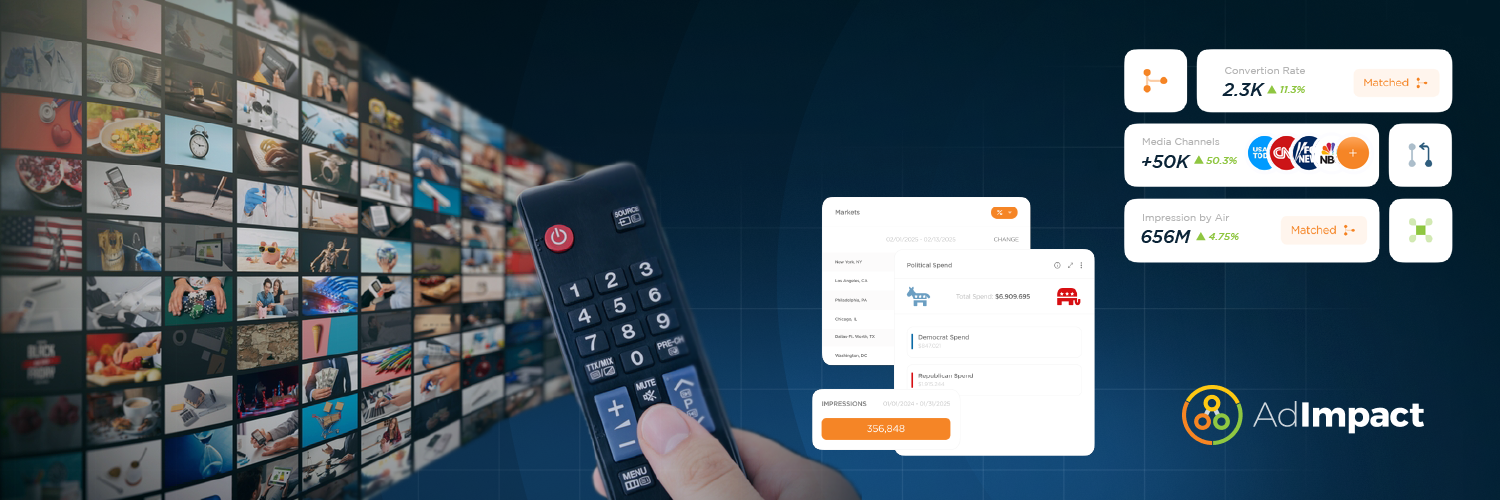Written by Don Norton
There’s no denying that 2024 was defined by the rise of streaming.
Consumers spent at least two hours with connected TV, and the options and flexibility offered by streaming services spurred a decline in linear viewership. Perhaps most notable was the addition of live sports to streaming platforms, helping make streaming holdouts more comfortable with using these services for their content needs.
In 2025, the medium will only continue to see viewership rise – and the industry will certainly adjust accordingly. As a result, we can expect to see two major trends shape the industry this year: ad-supported streaming becoming the norm and streaming surpassing linear for sports viewing.
Below, we’ll explore how the streaming industry will reach maturity in 2025.
Ad-Supported Streaming Becomes the Norm
Streaming providers wholly embraced advertisements in 2024. Services like Netflix, Amazon Prime Video and Max were hesitant to offer advertisements on their platforms out of fear of alienating their target customers. However, after Netflix saw explosive growth of its ad-supported plans, Max and Amazon Prime introduced their own ad-supported tiers, betting that consumers are comfortable with ads if it means paying less for services.
This also helps streamers compete with free, ad-supported plans like Pluto TV and Tubi, which hit 184.4 million users in 2024. With a mix of both new and old content offerings, consumers flocked to these services as another way to save money while still enjoying their favorite shows and movies.
Additionally, streaming has created an influx in local advertising on household TV. Advertisers with smaller budgets are provided with more opportunities to reach consumers on TV and with more targeting to ensure they drive ROI. Local TV is an area to watch in 2025 for TV advertising growth fueled by streaming.

While ad-supported services have become the norm, streaming providers are still going through growing pains with both brands and consumers, especially around frequency, measurement, and pricing consistency.
Many consumers are willing to put up with ads to save money from ad-tier plans, but when they are served the same set of ads every commercial break, this overexposure can lead to significant business issues. The overexposure can create a negative association with an advertiser’s brand, impacting their bottom line long-term. The ad fatigue also creates higher churn amongst streaming platform subscribers. In fact, 51% of viewers say they will take action to either switch to another streaming service or unsubscribe altogether if they get the same ad too often.
Similarly, brands are struggling with understanding the holistic performance of their ad campaigns. Because of the fragmentation of the media ecosystem, nearly every streaming service has its own way of measuring ad performance. While Nielsen is considered the industry standard, alternative currencies have proliferated, making it difficult for the industry to come to a consensus.
And that brings us to consumer sentiment around the rising costs of streaming services. Last year, the average U.S. consumer spent $61 per month on streaming services, up 27% from 2023. While ad-supported plans can help ease the cost for consumers, monthly costs are quickly approaching the costs of a cable package. With prices for services like YouTube TV rising in 2025, consumers might finally reach their limit on constant price increases on paid streaming plans.
In order to ensure that ad-supported streaming can reach its full potential in 2025, the industry must align on a general pricing and measurement strategy, helping level the playing field. Additionally, tech providers will need to increase access of the available tools to scale frequency capping. Only then can streaming see its growth take off.
Streaming Surpasses Linear for Sports Viewing
Another incentive for the industry to solve the issues that impact ad-supported streaming is the increased viewership of live sports on streaming platforms. More than 100 million people watched live sports via digital channels in 2024, and we expect this momentum to continue into 2025. In fact, we believe that sports viewing on streaming platforms will outpace linear viewing by the end of the year.
Sporting leagues are putting more of their games on streaming platforms, with the NBA announcing a deal with Amazon to broadcast 60 games per season starting this year. This is in addition to the numerous streaming-only games that have grown in popularity in recent years, most notably the recent NFL Christmas games on Netflix, which averaged 24 million viewers per game.
The success of these streaming-only games demonstrates that consumers have become more comfortable watching sports via streaming, and are willing to pay an added cost of another service to watch their favorite leagues and teams.
The wins experienced by Netflix and Amazon will also help boost services like YouTube TV and Fubo. Consumers realize they can get the same experience watching broadcast games on streaming as they do on linear, so they will cancel cable packages and switch to cheaper streaming services. Advertisers will follow suit, shifting more dollars towards streaming, helping further boost the streaming ecosystem.
Overall, streaming will play a larger role in the television industry in 2025. However, in order to meet the moment, advertisers and service providers must come together to solve frequency and measurement issues. This will be the key to building on the momentum currently taking place among ad-support platforms and the growth of live sports streaming.










